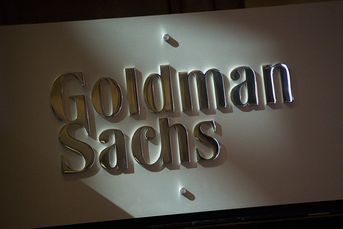<b>INsider:</b> At current rates, money fund investors will double their money — in 2,000 years

The question: Are such puny yields worth it when money isn't FDIC-insured?
It’s time for investors and advisers to get real about money market funds — and either accept them or reject them for the investment vehicles they are.
In times of higher interest rates, it might have been a different story. But right now, money market funds are yielding next to nothing and, because they are not guaranteed by the Federal Deposit Insurance Corp., that low yield can actually equate to higher risks.
While regulators and fund industry lobbyists haggle over the best ways to protect investors while preserving the $2.6 trillion money fund industry, the near-zero yields on these popular cash alternatives is leading to some creative portfolio management. A report last month by Fitch Ratings Ltd. showed that more than half of money market funds had exposure to European bank debt, illustrating the extremes that portfolio managers are going to in search of even the most minuscule yields.
“There’s nowhere else to go for yield,” said Brandon Semilof, director of StoneCastle Partners LLC, a specialty cash management firm with $3 billion under management.
Keep in mind that as money fund assets have shrunk by 35% from the $4 trillion peak in January 2009, the fund industry has had to waive hundreds of millions in money fund fees to offer even a few measly basis points of yield.
The current average money market fund yield is just 4 basis points, according to Peter Crane, president and chief executive of Crane Data LLC. “Clearly, investors aren’t in money funds for the yields, it’s all about the convenience,” he said. “But at 4 basis points, it would take almost 2,000 years to double your money.”
Even though money funds are not FDIC-insured — a big drawback — they do operate under guidelines that limit them to investing in higher-quality debt instruments, with durations capped at 13 months, and a weighted-average-maturity portfolio limit of 60 days.
The latest regulatory proposal involving a capital reserve requirement of up to 3% represents another black cloud for the money fund space. The capital reserve proposal, which is just one of a host of ideas being discussed, theoretically would help funds manage investor redemptions. It could also cost investors up to 3 basis points, trimming that average yield to just one basis point.
“The idea of a capital reserve buffer sounds nice, but how much is really enough, and where is the extra cost of providing that buffer going to come from?” Mr. Semilof asked.
This is where the conversation often leads to the idea of moving away from the stable net asset value for money market funds. Proponents of a floating NAV say it would help to remind investors that money market funds are not guaranteed.
Mr. Crane doesn’t buy it.
“If investors didn’t get the message back in 2008 [when the Primary Reserve Fund broke the buck], that they can lose money in a money market fund, then they have not been paying attention,” he said.
Further, Mr. Crane doesn’t think a floating NAV will be effective because the funds are so conservatively managed.
“People seem to be under the impression that money funds are somehow ignoring reality,” he said. “But money funds have always had to calculate their true NAV, and the price only floats out to the third decimal.”
Of course, there is an even bigger case against floating NAVs, and it comes in the form of institutional investors, which make up two-thirds of money fund assets and are a huge revenue stream for money market funds.
The fund industry is more than a little concerned that shifting to a floating NAV could force all those institutional assets to find an alternative source for liquid cash management.
But just because the money funds, as they are, still make sense for institutional investors, that does not mean they have to still make sense for retail investors. Some advisers and broker-dealers already have moved past money funds with FDIC-insured sweep accounts as cash management vehicles for their clients. Another alternative is a raft of new short-duration funds that are being promoted as money market hybrids with more competitive yields and floating NAVs.
Mr. Crane isn’t entirely sold yet, but he acknowledged that the changes are in the air.
“Nobody’s gotten the porridge quite right yet,” he said. “They’re either too hot, where the yield bounces around too much, or it’s too cold, where there’s not enough yield to move the NAV.”
Learn more about reprints and licensing for this article.








